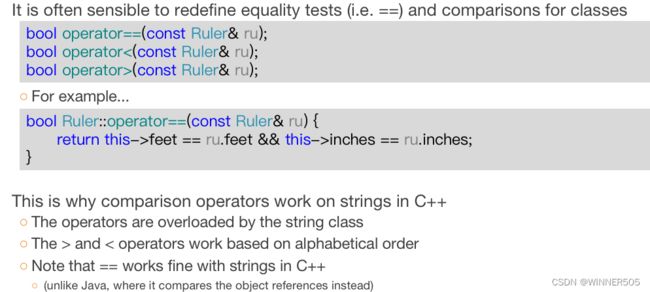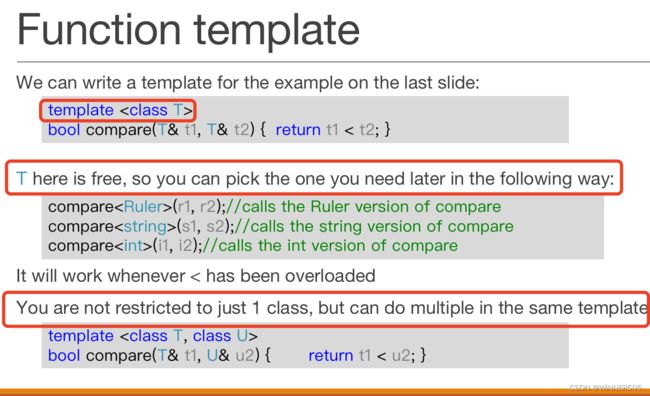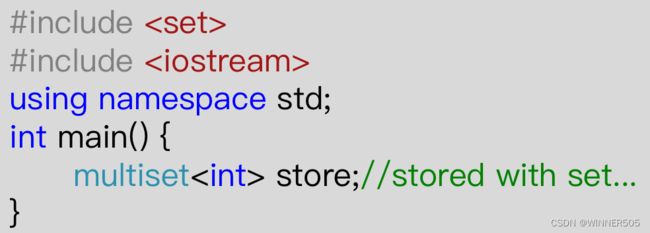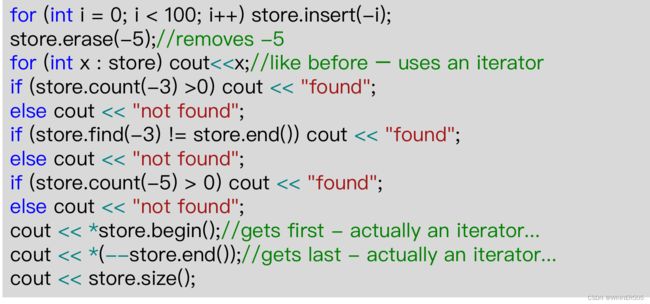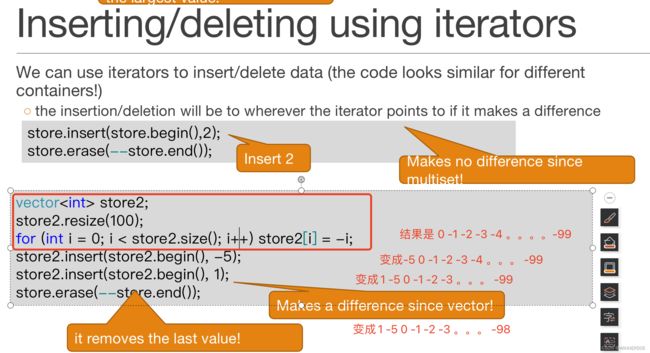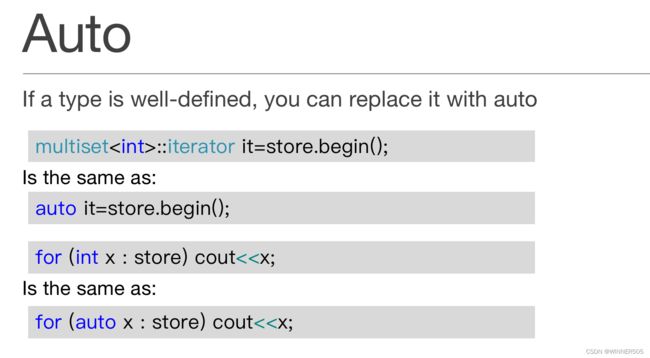【COMP282 LEC3 LEC4 LEC5】
LEC 3
Overloading 超载
1. Two functions can have the same name if they have different parameters
2. The compiler will use the one whose parameters match the ones you pass in
Performing Addition “+”
重载一个operator + ,这个operator+函数被定义为ruler类的成员函数
1. temp是一个新的ruler常量用来储存相加后的结果
2. feet和inches分别表示是英尺和英寸,类似磅和便士,(但是12英寸=1英尺)所以是this的feet和ru的feet相加,this的inches和ru的inches相加
Comparison Operators "<" ">"
这种重载作用大概就是指本来"==","<",">"有定义了,但是引入了英寸和英尺两个单位,所以重新定义这三个比较符号
LEC 4
Unary and binary operators
There are 3 types of operators:
Prefix-unary, postfix-unary and binary
E.g. -a would be prefix-unary, a++ would be postfix-unary and a+b would be binary
前缀一元运算符,后缀一元运算符,二元运算符
Templates 模版?
In overloading, we provide multiple implementations of the same function for different parameters
With templates, we provide one implementation that behaves similarly for different parameters (still implementing one function)
Class templates
为了解决返回多个objects的问题?
LEC 5
standard template library
Contains three main parts:
1. Containers: standard data structures
2. Iterators: standard ways to move through the standard data structures
3. Algorithms: uses iterator(s) (usually 2 and often some method as parameters) to give their results
Example containers : Vectors
Vector is essentially automatic resizing array 自动调整数组size
vector
Vector access
Containers
1. Vector:
automatic resizing arrays (i.e. O(1) for accessing/updating elements and adding to the end – adding elements elsewhere cost O(n))
2. Arrays:
arrays (same complexity) Faster than vector due to less overhead
3. Deques:
More advanced automatic resizing array that allows inserting/deleting at the start as well in O(1) time Slower and have more overhead than vector
4. Set and map (and their multi- variants):
balanced trees (O(log n) accessing/updating/adding/removing elements)
5. List:
doubled-linked list (O(1) traversing/updating/adding/removing elements – can’t really access)
6. Forward_list:
single-linked list
Example container: Multiset (Multiset is essentially a balanced tree)
Things are stored in ascending order (based on <) by default
You can do it with other orderings, but it looks a bit ugly…
Multiset access:
Iterators 迭代器是用于访问/操作其容器中的数据的对象
Iterators are objects for accessing/manipulating the data in their container Multiple levels of them:
Random access, bidirectional, forward, input = output
(Input and output are at the same level)
Syntax looks a little strange so we need to explain it
1. Multiset/vector class has a member object called iterator
2. In this example, the multiset/vector template is using integers
3. So the iterator will point to an integer within the multiset/vector
Inserting/deleting using iterators
Iterator invalidation
这里it4是没有明确指代的 不能用auto it4 = store2.end();
而应该重新定义it4 :it4 = store2.end();
再去比较
STL Arrays
可以用function

